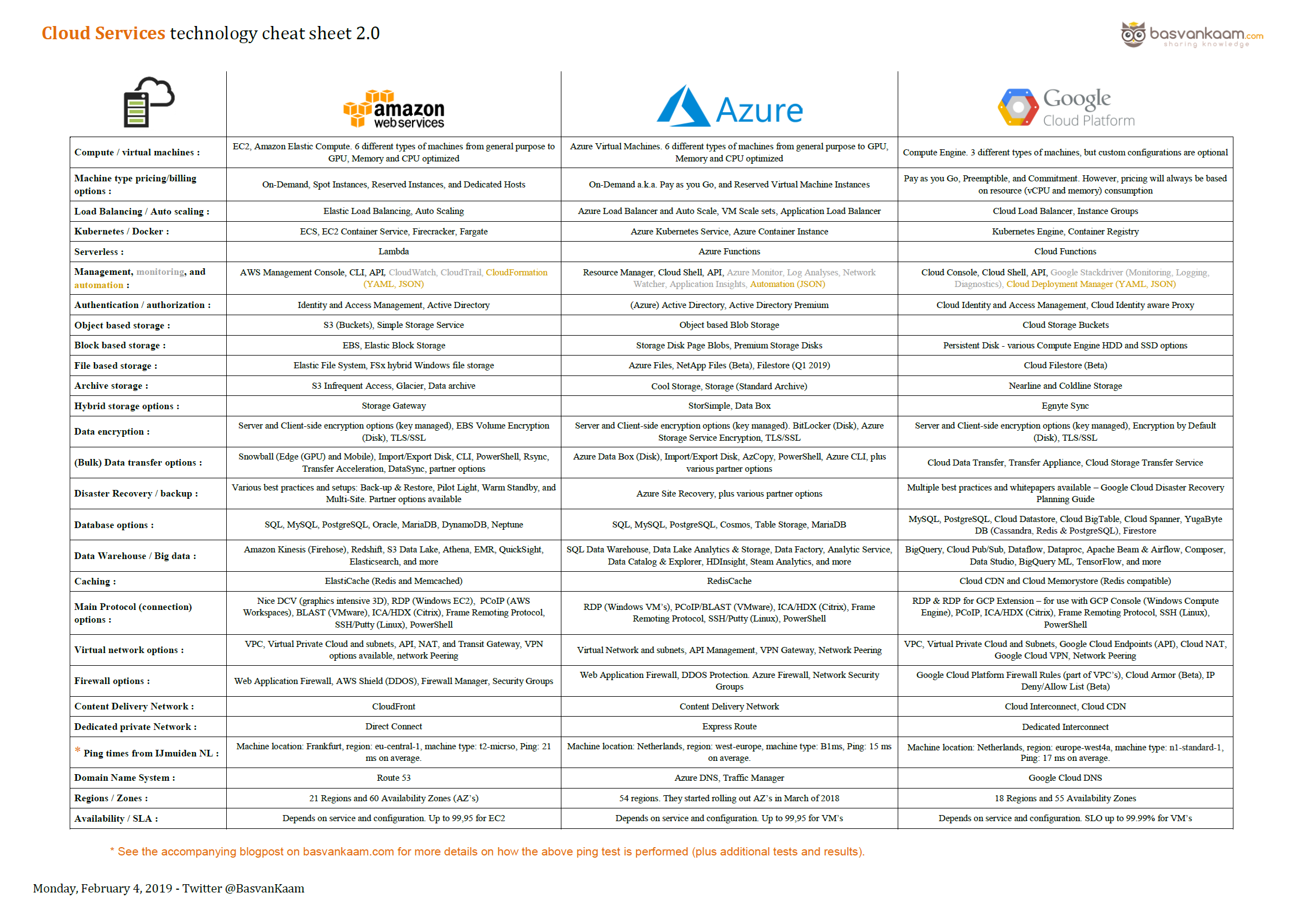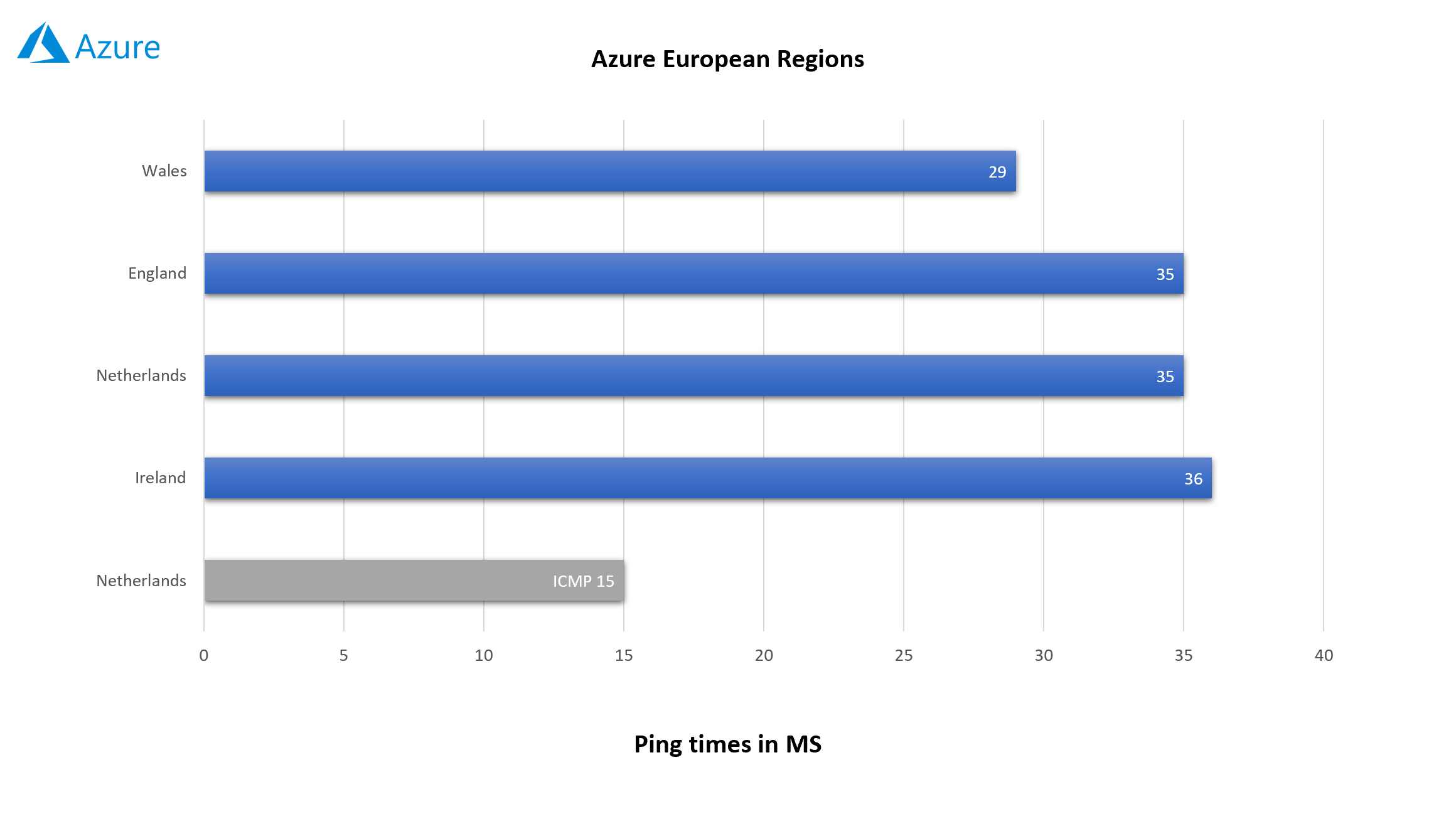About two months ago I published an updated version of the Cloud Services Cheat Sheet, the amount of (positive) feedback has been overwhelming, to say the least. Again, I have added and updated multiple columns including Big Data/Warehousing and Ping/latency times (visuals included) to the various European Data centers (from all three vendors) next to a few smaller updates. Note that I performed two separate Ping tests, one using standard ICMP and a second one using HTTP requests.
First of all
Thank you, Marius, Rachel, Rick, Mike, Richard, Maik, Rob, Geert, Edwin, Stefan, Kris, Christiaan, Jeffrey, and all others I might have left out for your feedback, publicly and privately, keep it coming.
While updating the fields and adding in new rows I changed the font size from 7 to 6 (again), which just gave me enough room to add what I wanted. Luckily, it’s a digital sheet, either online or in the form of a PDF document, so, when needed zooming in is easily done. I do think this will be last time I can get away with this, time will tell.

What I’ve added…
- Details around various Big Data and Data Warehousing services. However, do note that this is not an exclusive list, there is more to go around. It’s just too much to cram it all into a single sheet, space is limited as it is already. At least these are the best known en most popular ones.
- Various Ping (ICMP and HTTP) response times from all three platforms. Read on below for more details on how I went about it. Multiple tests were performed. I’ve included some images showing the various response times in MS.
- I’ve updated the regions and zones sections.
- Multiple additions on File Storage.
- Reviewed and slightly edited the virtual network and CDN sections.
- Added the most recent Azure Logo, at least I hope so (you guys have an eye for detail).
- And some smaller changes overall.
What I’ve done…
- I created a virtual instance on all three platforms – see the cheat sheet for machine types, regions, and locations.
- Used a standard marketplace Windows Server 2016 Datacenter Edition template for all three platforms/machines. Basic HDD’s, nothing fancy, a couple of GB’s Ram, and a single vCPU per machine.
- Made sure they were all reachable through RDP/Ping/ICMP. Except for that, I didn’t change anything to the default configuration, network settings included.
- Pinged for at least 5 straight minutes per machine, independent from each other. Wrote down the average – see cheat sheet and visuals below.
- I also used an online community service named pingtestlive.com.
- From their website: Ping Test Live is a tool that enables you to perform ping tests to any website or server that you desire. With a few clicks, you can check out the latency between your device and any remote server. It checks the ping through HTTP requests but results are as accurate as ICMP ping. It uses HTTP response status codes to measure the round-trip time between your device and the remote server. To provide you with more accurate latency results, we recommend closing all other programs while checking your ping.
- It enables you to select all major Cloud platforms one by one, and so I did. It then goes on and performs Ping tests as described above to various virtual machines in each datacenter/Region.
- All ping tests were conducted from IJmuiden, the Netherlands my hometown through a stable and fast cable internet connection.

- I selected the European datacenters (doesn’t make sense to cover the whole globe form one single location). There were one or two missing. See the visual overviews below for the results.
- As you can see from the HTTP test as well as from the ICMP test, I got some very solid results.
- Some suggested putting the sheet on GitHub, which is something I’m considering/and having a look at as well. I’ll make sure to involve others when and if the time comes.



This was just a simple test meant to give you an indication, do your own research before you commit to anything. I’ll look into various ping tests globally at a later stage.
And that’s it, at least for now. I’ll make sure to again collect any feedback you guys might have, and I’m sure another update will follow near the end of Q2 or the beginning of Q3. Thanks all.
Don’t forget to check out our latest Cloud book project initiative. Give it a read. The submission window has been closed and we are now working on getting everything ready for the launch event on June 7th during E2EVC Berlin. Go here.









